
Since Hamas’s deadly cross-border attack on October 7, 2023, Israeli authorities have been targeting the Palestinian militant group’s top leaders, killing Hamas deputy Saleh al-Arouri nearly three months later in a targeted strike in Beirut, Lebanon. The militant Islamist group, founded in 1987 during the first Palestinian intifada, has ruled the Gaza Strip since 2007. FRANCE 24 takes a look at some of the key figures on Israel’s hit list.
Mohammed Deif, Israel’s public enemy No. 1
Suspected by Tel Aviv of being the mastermind behind the October 7 attacks, Mohammed Deif is the commanding officer of Hamas’s military wing – the Izz el-Deen al-Qassam Brigades – and has been leading Hamas’s military operations since 2002. He joined the group in the late 1980s after a spell at the head of the Muslim Brotherhood’s student union and has been a main target of the Israeli intelligence services for more than 30 years.
Deif was born in the Khan Younis refugee camp in Gaza in 1960 and trained alongside Yahya Ayyash, a Hamas military leader who was assassinated by Israel’s internal security service Shin Beit in 1996.
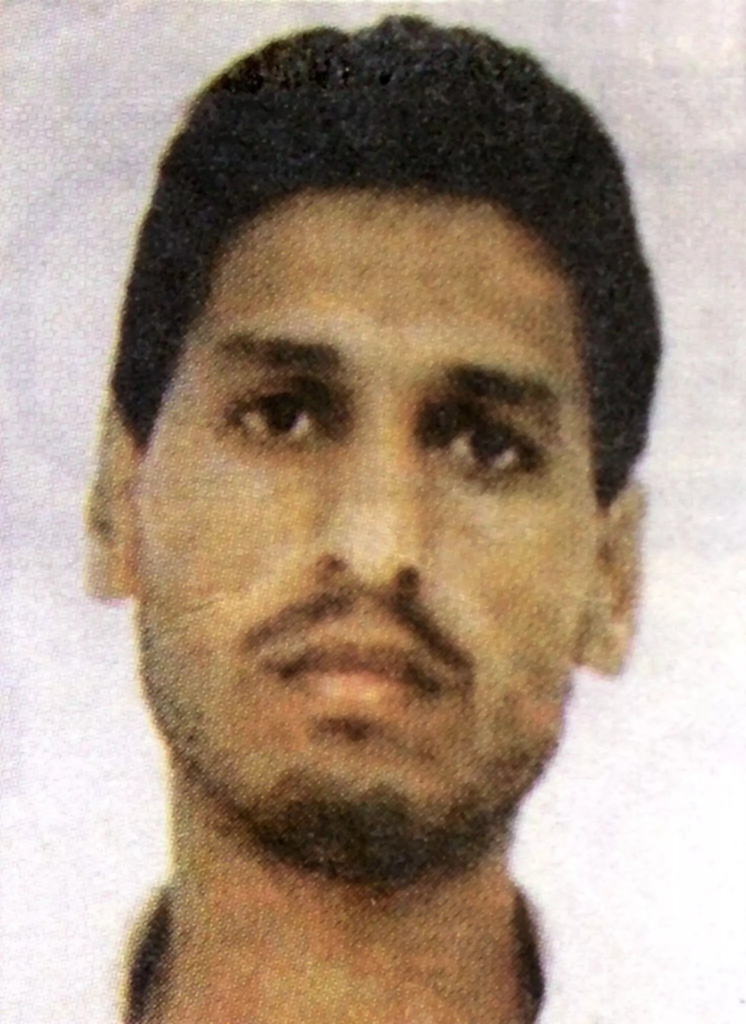
An undated handout photo shows alleged Palestinian military leader of the radical Hamas movement, Mohammed Deif. © AFP
It was under Deif’s command that the al-Qassam Brigades acquired sophisticated rockets and began launching land incursions from the Gaza Strip through underground tunnels. Israel accused him of being the mastermind behind the suicide bombings that targeted Israeli civilians in the mid-1990s and from 2000 to 2006.
Deif was born under the name Mohammed al-Masri. His alias “el-Deif” means “the Guest” in Arabic and refers to his tendency to change hideouts frequently. He is also known as Mohammed Diab or under his nom de guerre Abu Khaled. The most recent known photo of Deif dates to 1989.
Nicknamed “Ben mavet” (meaning “the son of death” in Hebrew) by Israelis, Deif has dodged several assassination attempts over the years, including in 2002, 2003 and 2006. The last attempt on his life left him a paraplegic, Israeli officials say. But Hamas has never confirmed this information.
Read more
In 2014, his wife and two children were killed when their house northwest of Gaza City was bombed.
Ismail Haniyeh, the political leader
Born in one of Gaza’s most crowded refugee camps in 1963 and widely written about in the media, Ismail Haniyeh has topped Israel’s most wanted list for years.
He has been at the head of Hamas’s political branch since May 2017 and has lived between Turkey and Qatar since he voluntarily went into exile in December 2019.
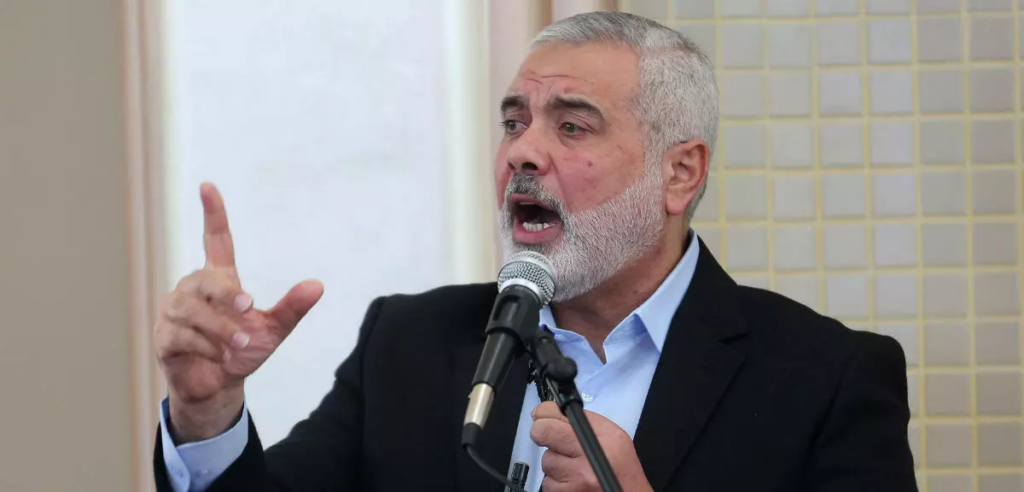
Hamas’s political bureau chief Ismail Haniyeh gives a speech in February 2017. © Said Khatib, AFP
Haniyeh earned a degree in Arabic literature before joining Hamas in 1988. He spent several years in Israeli prisons in the late 1980s and early 1990s, when Israeli authorities accused him of running the group’s security wing. He returned to Gaza in 1993 and was appointed dean of the Islamic University of Gaza.
After Israel released one of Hamas’s founders, Sheikh Ahmed Yassin, from prison in 1997, Haniyeh was chosen to head his office. He rose through the ranks until he eventually became prime minister of a Palestinian unity government in 2006.
In 2007, Haniyeh was deposed by Palestinian Authority President Mahmoud Abbas after Hamas took control of the Gaza Strip by force. Considered a pragmatist, he has repeatedly called for reconciliation with Fatah, a rival Palestinian nationalist party that backs Abbas, to no avail.
Israel’s then defence minister, Shaul Mofaz, had threatened to kill Haniyeh. Mofaz stated on live radio that Haniyeh, who had escaped an attempt on his life in 2003, was not safe from assassination if his group “continued its terrorist activities”.
Re-elected leader of Hamas in 2021, Haniyeh has been on the US list of Specially Designated Global Terrorists(SDGTs) since 2018. The State Department listed him for having “close links with Hamas’s military wing” and for being “a proponent of armed struggle, including against civilians”.
After the group attacked Israel on October 7, Haniyeh said they were “on the verge of a great victory” in a speech broadcast on the Hamas-run Al-Aqsa television channel.
That same day, Al-Aqsa TV showed Haniyeh appearing alongside other Hamas leaders in his office in Doha, jubilantly watching images of the deadly attack. He then proceeded to lead his acolytes in a prayer to “thank God for this victory”.
On October 17, the Hamas media office reported that Israeli airstrikes had targeted Haniyeh’s family home in Gaza City.
Saleh al-Arouri, Hamas’s former No. 2
Saleh al-Arouri was appointed deputy chairman of the Hamas political bureau in 2017 and was considered one of the group’s key political leaders until his death on January 2, 2024 by an Israeli strike in Beirut, Lebanon.
Arouri was among the victims of an Israeli strike on Hamas’s office in Dahiyeh, a Hezbollah stronghold in southern Beirut.
Accused by Israel and the US of financing and overseeing Hamas’s military operations in the occupied West Bank, from where he hailed, Arouri had been on the US list of terrorists since 2015.
Through its Rewards for Justice Program, the US State Department offered up to $5 million for “information leading to the identification or location” of Hamas’s No. 2.
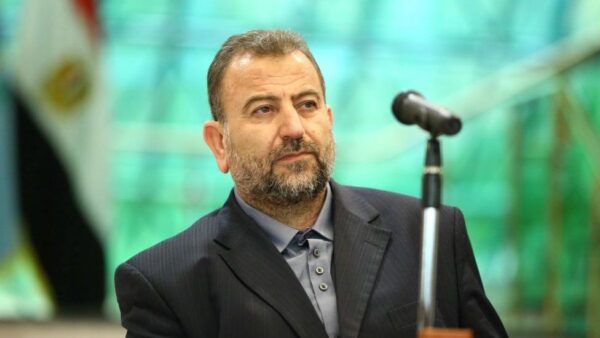
Arouri was imprisoned in Israel between 1995 and 2010, then deported to Syria before he moved to Turkey and then Lebanon.
Arouri was believed to have been involved in planning the kidnapping and murder of three Israeli teenagers in the occupied West Bank in the summer of 2014. He publicly celebrated the murders as a “heroic operation”, according to the US State Department.
On October 25, the Hezbollah-owned Al-Manar TV channel reported that Arouri held a meeting with Hezbollah leader Hassan Nasrallah and the head of the Palestinian Islamic Jihad, Ziyad al-Nakhalah.
Israeli troops blew up his family home in the occupied West Bank on October 31, but local residents said it was unoccupied at the time.
The Israeli military arrested around 20 people on October 21, including Arouri’s brother and nine of his nephews, in the village of Arura near Ramallah.

Marwan Issa
Marwan Issa, the ‘shadow man’
Marwan Issa, 58, is Deif’s right-hand man. According to Israeli media, he is considered a key target of Nili, a special unit set up by Shin Bet, Israel’s internal security service, and the Mossad intelligence service to track down the Hamas members responsible for the October 7 attacks.
Issa is the deputy commander-in-chief of Hamas’s military branch. Like Deif, Issa has escaped several assassination attempts, including one in 2006, according to Israeli daily newspaper Yedioth Ahronoth. At the time, he was taking part in a meeting also attended by Deif. The newspaper also says his house has been bombed twice, in 2014 and 2021.
“Israel says that as long as Issa is alive, the psychological war against Hamas will not stop,” according to Yedioth Ahronoth.
Yahya Sinwar, leader of the Gaza Strip
Elected in February 2017 as leader of the Gaza Strip, a position previously held by Haniyeh, Yahya Sinwar is a key political figure.
Born in 1962 in the Khan Younis refugee camp in southern Gaza, he is one of the founders of the al-Qassam Brigades as well as the Majd, a Hamas security service that manages internal security matters for the group’s military branch.
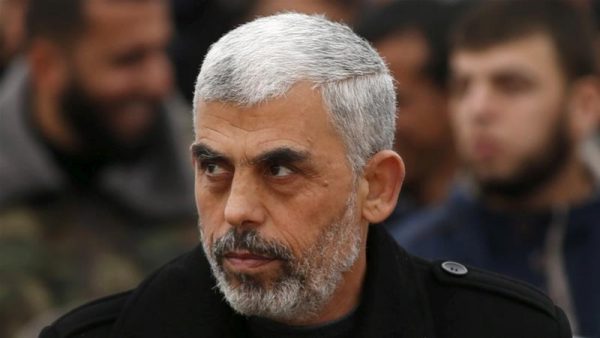
After being arrested by Israeli authorities in 1988 for terrorist activities, Sinwar was sentenced to four life terms in prison. But in October 2011, he was released as part of a deal in which 1,000 Palestinian and Israeli Arab prisoners were released in return for the liberation of French-Israeli soldier Gilad Shalit, who was detained by Hamas for five years.
He has been on the US blacklist of international terrorists since 2015.
He is also suspected by Israelis to be one of the main architects of the October 7 attacks.
Khaled Meshaal, the Hamas leader in exile
Khaled Meshaal was a Hamas leader in exile for a long time before being replaced by Ismail Haniyeh. He has been an important figure of the militant group for decades and is considered a leader of its more radical bloc.
A fierce opponent of the peace process with Israel, Meshaal left his native West Bank in 1967 for Kuwait and joined the Muslim Brotherhood. He participated in the founding of Hamas and stepped in as leader of its political bureau in 1996.
After Kuwait, Meshaal moved to Jordan in 1990.
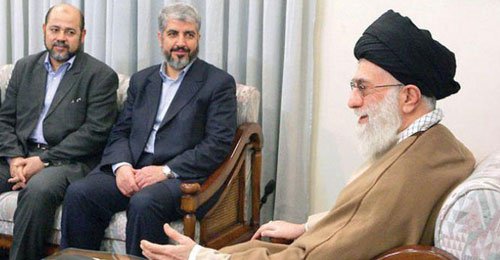
At Prime Minister Benjamin Netanyahu’s instructions, the Israeli intelligence service Mossad attempted to assassinate him in 1997 by injecting him with a toxic substance. Two Mossad spies were arrested by Jordanian authorities. Pressured by the US and Jordan, Netanyahu eventually provided Meshaal with an antidote in exchange for the return of the Israeli spies. Meshaal survived.
The operation provoked a diplomatic crisis between Israel and Jordan and is considered one of the Israeli intelligence services’ most notorious setbacks.
In 1999, he was expelled from Jordan alongside other Hamas leaders and sought refuge in Syria, where he was propelled to the head of the group in 2004 after Sheikh Yassin and his successor Abdel Aziz al-Rantisi were killed by Israeli authorities.
In January 2012, Meshaal left Syria in protest against President Bashar al-Assad’s campaign of repression against the opposition there and headed to Qatar.
That December he made his first visit to Gaza in 45 years to mark the 25th anniversary of Hamas. While there, he reaffirmed his refusal to recognise the Jewish state. “Palestine from the sea to the river, from north to south, is our land and our nation, of which we cannot cede an inch or a part. We cannot recognise the legitimacy of the occupation of Palestine, or that of Israel,” he declared in front of some 100,000 Palestinians gathered in Gaza City’s Katiba Square.
Months earlier, paradoxically, Meshaal had said he was in favour of a two-state solution.
The Hamas chief resigned as chairman of the political bureau in 2017 but remains highly influential within the group.
On October 11, 2023, a few days after the terrorist attacks on Israeli soil, he called on the Muslim world to demonstrate in support of Palestinians and for people in neighbouring countries to join the fight against Israel.
Hamas leaders killed since October 7
While many key leaders of Hamas and its military branch have managed to elude attempts on their lives, several senior officials based in Gaza have been killed by Israeli strikes since October 7.
On October 10, the group announced the deaths of Zakaria Abu Maamar and Jawad Abu Shammala, two members of its political office. Maamar lead the bureau’s economic department and Shammala was in charge of coordinating with other Palestinian factions as head of the national relations department.
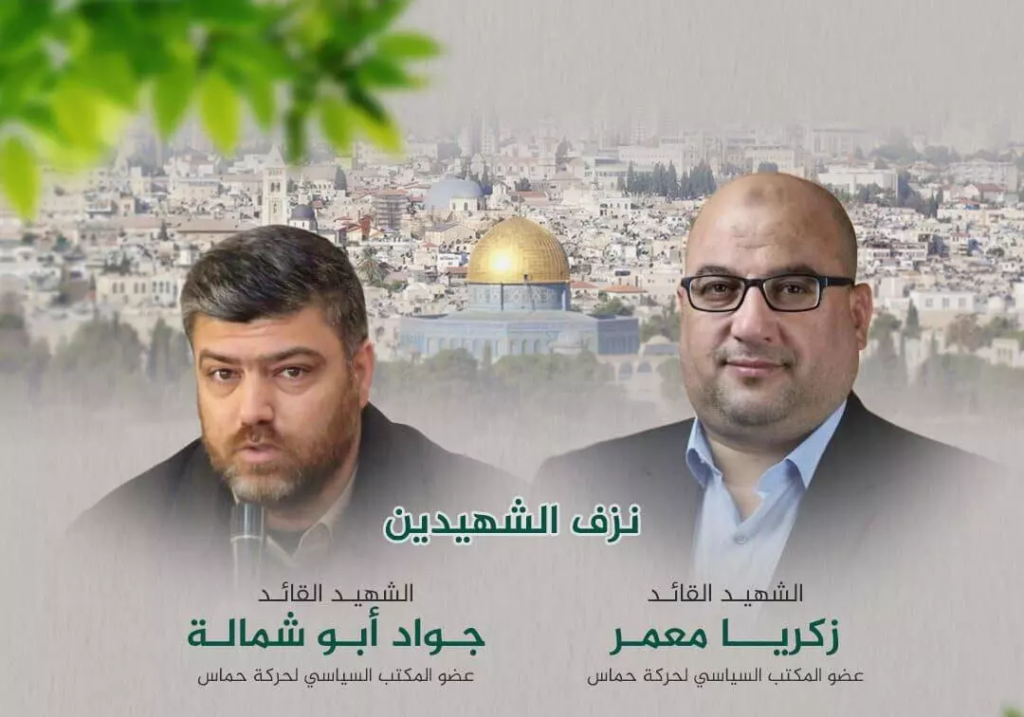
A photomontage published on the Hamas website on October 10 announces the death of Zakaria Abu Maamar and Jawad Abu Shammala. © Screenshot of Hamas website
On October 14, Israel’s military said it had killed Merad Abu Merad and Ali Qadi in air strikes. Both Hamas commanders, Merad was the head of Hamas’s aerial system and said to be responsible for a significant part of the deadly offensive on October 7. Qadi was a commander in Hamas’s Nukhba (“Elite”) unit, which led the attack on Israeli towns near the Gaza Strip.
According to the Israeli army, Qadi was 37 years old and a native of Ramallah in the occupied West Bank. He was released from prison back in 2011 as part of the exchange for Shalit.
Hamas reported on October 17 that an Israeli strike had killed Ayman Nofal, a member of the higher military council of the al-Qassam Brigades in charge of the Central Gaza area. The Israeli army accused Nofal of carrying out numerous attacks against Israel, supervising the manufacture of weapons and taking part in organising and kidnapping Gilad Shalit in 2006.

The leader of Hamas’s military wing, Ayman Nofal, speaks during a military drill in front of the media in Gaza on September 12.© Said Khatib, AFP
While detained in Egypt in February 2011, Nofal took advantage of the uprising against president Hosni Mubarakto escape from prison and reach the Gaza Strip through a smuggling tunnel.
The Israeli military also said on October 17 that it had “eliminated” Osama Mazini, former minister of education in the Hamas government and a member of the political bureau in Gaza. He was also head of the Hamas Shura Council, a consultative body that elects the group’s political bureau.
Jamila al-Shanti, the first woman elected to the Hamas government, was killed on October 18 in an Israeli raid in Jabalia, northern Gaza.
A Gaza native, she joined the Muslim Brotherhood in Egypt in 1977 before aligning with Hamas 10 years later. She returned to Gaza in 1990 and joined Hamas’s political system.

In 2006, Shanti became a member of the Palestinian Legislative Council, the legislative branch of the Palestinian Authority, which has not met in a regular session since the 2007 West Bank-Gaza split. In 2013, she was appointed minister of women’s affairs in Gaza under the Hamas government.
On October 19, a Hamas-aligned news agency announced the death of Jehad Mheisen, commander of the Hamas-led national security forces. Members of his family were also killed in the Israeli strike that targeted his home.
Daily newsletterReceive essential international news every morning
The Israeli army announced on October 31 that it had killed Nasim Abu Ajina, a high commander of the Beit Lahia battalion in Hamas’s northern division.
In a statement published on Telegram by the army, Ajina was accused of directing the October 7 massacre in the Erez Kibbutz and the Netiv HaAsara community.

Nassim Abu Ajina
“Ajina had commanded Hamas’s air system and participated in the development of the terrorist organisation’s drone and glider capabilities,” the army wrote. “His elimination is a severe blow to the Hamas terrorist organisation’s ability to disrupt IDF ground operations.”
That same evening, the Israeli military struck the Jabalia refugee camp, the largest in the Gaza Strip, to “eliminate” Ibrahim Biari. Israel said the Hamas commander was pivotal in organising the October 7 attacks and that he was located in a vast complex of underground tunnels from which he directed operations. According to the Hamas health ministry, the bombing killed more than 50 people in addition to Biari.
France24
Leave a Reply
You must be logged in to post a comment.